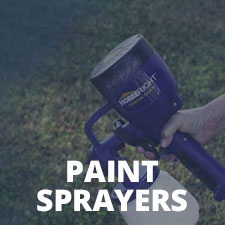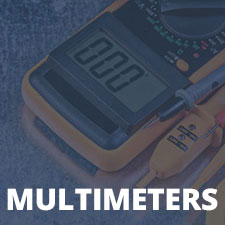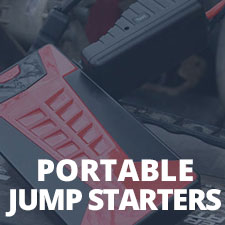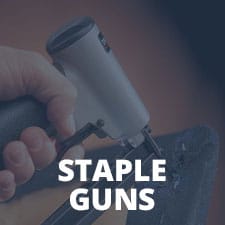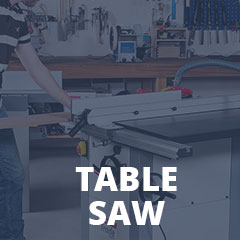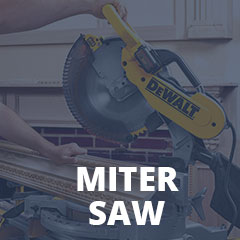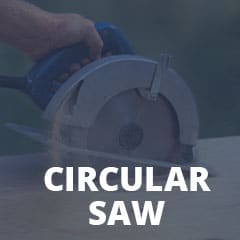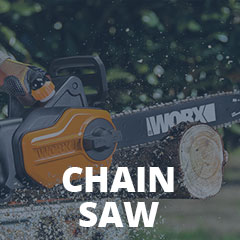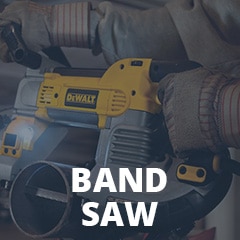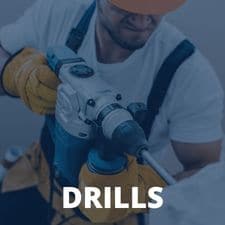When trying to choose between an HVLP vs airless paint sprayer, the challenge is figuring out which features will benefit you. In this review, I aim to remove the dilemma by going step-by-step through the capabilities of each type.
Both will help you complete the job faster than using the conventional painting approach, plus they will provide a more uniform finish — with no brush strokes. You’ll also find models geared for DIYers as well as painting pros under each category.
There are some differences though that need to be inspected to attain a clearer idea of which will be best for you.
HVLP sprayers typically work at a lower pressure when atomizing materials which results in less overspray — meaning less mess and not covering the surrounding surface in paint. This aspect makes it a great choice when it comes to both small to medium outdoor and indoor projects, as well as detailed items such as furniture.
In contrast, airless sprayers work at a higher pressure, making them extremely efficient when it comes to covering expansive areas. Due to this higher pressure, they’re also superior when dealing with heavy-density coatings.
But, before I get carried away here, let’s jump right in and take a look at each unit in a feature by feature comparison.
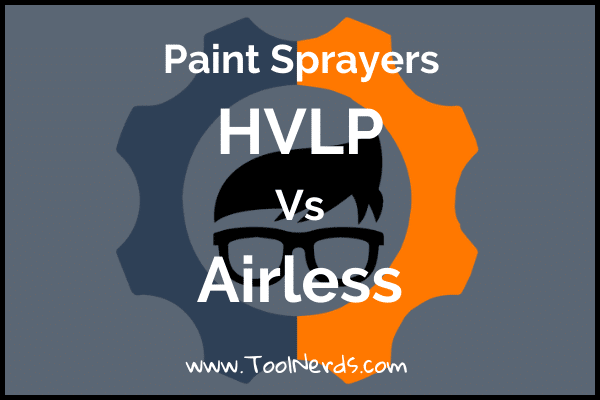
Operating Pressure
HVLP sprayers by nature, operate at a lower pressure and pump air from either a turbine or compressor — the clue is even in the name, high-volume, low-pressure. When looking at HVLP models you will find that the operating pressure is usually less than 10 PSI.
The lower PSI in an HVLP vs airless sprayer means that the paint atomization is a lower velocity resulting in a softer spray pattern.
Some units do use a higher inlet pressure of between 20-80 PSI. A conversion spray gun, like the Wagner 276124B will then convert this internally to a lower operating pressure and once again deliver fine atomization.
There is also a second pressure control dial on this type of sprayer, which allows the user more tailored control over the delivered fan size.
Coverage
An HVLP sprayer will generally deliver less overspray than its airless equivalent — resulting in less paint wastage and saving you money in the long run. It will also deliver a more satin-like finish with less of the “orange peel” effect when using less viscous coatings — a textured mottled finish that can be caused by material being subjected to an overload in pressure. On the topic of coverage, an HVLP sprayer is much better than an airless sprayer at precision detail — small furniture and trim for example. That said, it’s not ideal when working on larger commercial size projects due to the generally slower coverage speed and smaller paint capacity.
Paint Mediums
If you’re spraying drywall projects with latex, the smaller more uniform particles delivered by an HVLP sprayer will not make so much of a difference to the end result. However, when working on smaller finishing touches, an HVLP like the Quick Finish paint sprayer from HomeRight will really come into its own — likewise when spraying with enamels, varnishes, and stains. As a rule, most HVLP sprayers will handle most low to medium viscosity coatings, however a degree of thinning could be required. Some models are an exception to this rule, such as the FLEXiO 5000 — it can handle unthinned latex.
Price
In the HVLP spray gun vs airless battle, HVLP sprayers are usually a little more budget-friendly, you should be able to find a variety of models sitting under (or around) the $200 price bracket. But this doesn’t mean that they’re inferior when it comes to technology — simply smaller with fewer parts.
Portability
As I mentioned in this airless vs HVLP comparison, size-wise, the latter is typically smaller than its airless counterpart — making transport more convenient. Granted, some HVLP units have grown in size since they were first introduced and now possess standalone turbines. But even taking this into account, they’re still convenient to move between jobs.
Who Should Use an HVLP Paint Sprayer?
With popularity growing in the HVLP world, more paint pros and DIYers are turning to these machines to complete their projects — although maybe for different reasons. For DIYers, an HVLP sprayer will get most home improvement jobs completed in a timely manner. As for pros and contractors, an HVLP sprayer can be a useful second machine for touch-ups and finishing touches.
Pros of an HVLP Sprayer
- Budget-friendly.
- Portable.
- Suitable for a variety of small to midsize projects and finishing touches.
- Most models offer a variety of spray patterns.
- High transfer efficiency.
- Straightforward to clean.
Cons of an HVLP Sprayer
- Lacks capacity for larger jobs.
- Relatively slower coverage when compared to an airless sprayer.
Operating Pressure
If you compare an airless vs HVLP paint sprayer, the airless boasts a far higher operating pressure — typically in the region of 1500-3000 PSI. This high operating pressure allows for an outstanding spray rate of anything from around 0.40 to 1.20 gallons per minute. Pumping out such a high volume, means that an airless sprayer will inevitably accomplish projects quicker than an HVLP machine.
Coverage
Airless sprayers are made for grander interior or exterior projects. Similar to an HVLP, an airless sprayer will provide an even finish on many different types of surfaces — from walls to decking and outbuildings. Unfortunately, the transfer efficiency with an airless sprayer is not as high as an HVLP, meaning that it’s not the best route for automotive jobs — the finish will not be quite as precise. It would also be overkill for intricate work.
Paint Mediums
This is where airless sprayers like the Titan 740 really come into their own. Due to the higher operating pressure, their ability to deal with thicker coatings is a huge bonus. Some airless sprayers are even capable of spraying viscous block filler — probably one of the densest mediums you will come across. An airless sprayer can also handle everyday coatings such as stains, varnish, enamel, and latex with ease.
Furthermore, most airless machines draw material directly from the container it’s supplied in — less need for you to refill a paint cup — like an HVLP — so you can complete the job in hand quicker with minimal painting pitstops.
Price
To all intents and purposes, an airless sprayer vs HVLP is a more formidable unit — as it will work in a small-job situation as well as large projects. So, as you would expect, airless sprayers will generally have a higher price tag.
You also need to take into account that airless sprayers require regular servicing to replace wearable parts such as the packings — something that HVLPs don’t need. This is something that you will also need to budget for in the long run.
Depending on your requirements, a budget-friendly, no frills airless sprayer — the GoPlus for example, will set you back around $200. And, in terms of the most expensive and multifunctional, the sky’s the limit regarding cost.
Portability
Ordinarily, airless sprayers tend to be a larger and heavier unit than an HVLP. That said, many airless models, like the Graco 210ES, have been designed with portability in mind.
It’s also common for the larger machines to come in a variety of designs to meet your transportation requirements. Many of the manufacturing giants offer standing, upright, or low-lying cart-style configurations.
Who Should Use an Airless Sprayer?
An airless sprayer is a worthwhile investment for anyone that wants to complete their projects quickly and has a variety of jobs lined up. Many models are designed with the hardcore home improver in mind, as well as contractors and decorating pros. Some models have even been developed for large painting companies — offering technology that allows you to keep track of a fleet of sprayers from your cell phone.
Pros of an Airless Sprayer
- Suited for larger projects.
- Can handle heavy-duty mediums, such as block filler.
- Rapid coverage.
Cons of an Airless Sprayer
- The cleanup process is more involved.
- Not ideal for precise work.
- Can be a harder hit on the wallet.
Conclusion
HVLP vs Airless Paint Sprayer FAQs
Q: Can You Paint a Car With an Airless Sprayer?
An airless sprayer technically can be used for bodywork painting, but it’s not ideal. If you have automotive enterprises on your mind, then a purpose-built HVLP automotive sprayer, like the Wagner MotoCoat will provide better results.
Q: Is HVLP Better Than Airless?
Ultimately, it depends on what you’re looking to coat. If you compare an HVLP vs airless for cabinets, and other intricate jobs then the smaller more uniform particles of the former will help you achieve the finish you are aiming for. In contrast, if you have high-volume projects lined up, like house exteriors or larger commercial undertakings, then an airless sprayer will be more your bag.Q: Can You Spray Latex Paint With an HVLP Gun?
Many HVLP sprayers are not designed to handle heavy-duty latex paints. But there are a few upgraded models that can — such as the Fuji Mini-Mite 3. Depending on how many tasks you have lined up that require interior and exterior latex coverage, you may be better off investing in an airless sprayer.
Q: Do You Have To Thin Paint for an HVLP Sprayer?
Yes and no. You will be able to spray lower viscosity coatings, like stains and varnishes, without thinning. Yet, as mentioned, when it comes to thicker mediums such as latex, dilution may be required — depending on each individual unit’s power and fluid nozzle size.Q: How Much Does an Airless Paint Sprayer Cost?
When you compare an airless paint sprayer vs HVLP sprayer, you’ll find that the price trend is typically a little higher — as they’re built for rapid coverage, high volume, and expansive areas.
To give you more of an idea, take a look at my airless sprayer reviews.
Q: What’s the Current Price of an HVLP Paint Sprayer?
An HVLP is typically designed for projects with detail and a flawless finish in mind. To find out about money matters and more, read my HVLP buyers guide, review and comparison.Q: Do You Have To Thin Paint for an Airless Sprayer?
Airless sprayers, such as the Graco TrueCoat II, are well known in the paint spraying world for being able to grapple with viscous latex paints — without thinning. However, not all sprayers are created equal, so always check the manufacturer’s guidelines to make sure it is the right unit for you.


